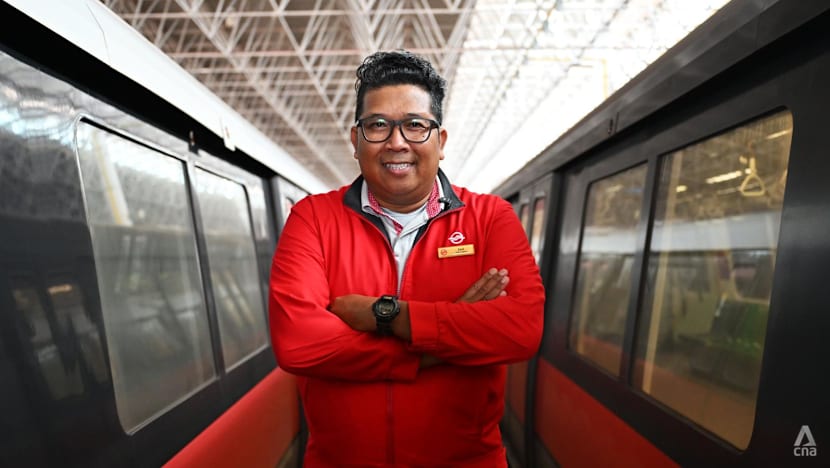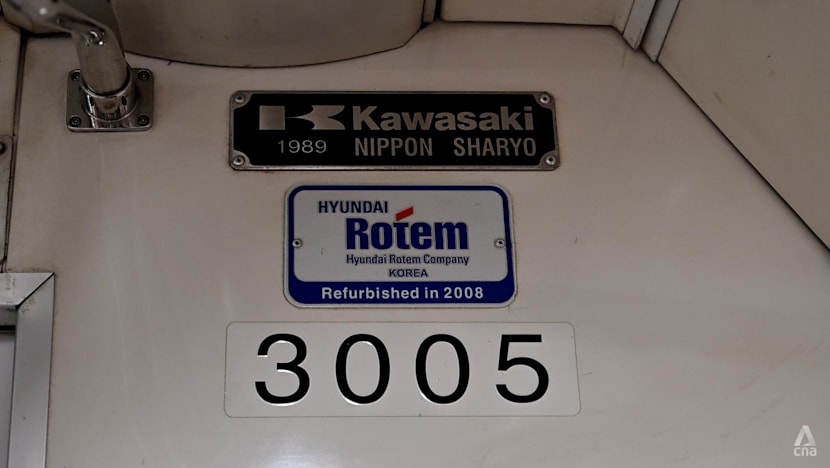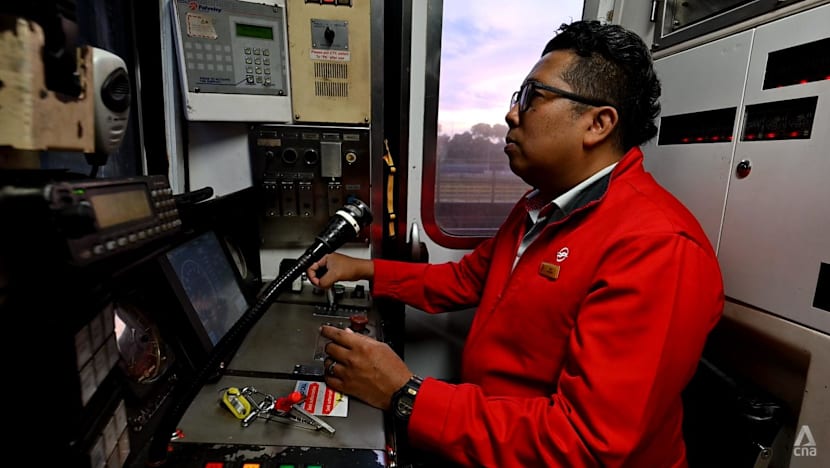As the last of Singapore's first MRT trains retires, a veteran captain reflects on 30 years at the controls
The first-generation MRT trains have been fully decommissioned, marking the end of an era for both commuters and train operators.

SMRT train captain Mohd Zaidi Sulaiman posing for a photo at Bishan Depot, on Sep 19, 2025. (Photo: CNA/Jeremy Long)

This audio is generated by an AI tool.
SINGAPORE: After 31 years behind the controls of Singapore’s first-generation MRT trains, train captain Mohd Zaidi Sulaiman bid a heartfelt farewell to the last of the iconic fleet as it was officially decommissioned on Friday (Sep 26).
“It’s very sad because we grew up on this train,” said the 52-year-old, who began driving the Kawasaki Heavy Industries C151 trains in 1994 when he was just 20.
“I started off as a bachelor, fresh from NS (National Service). Got married, had children, and until today … I'm proud to say, it was a beautiful journey,” said Mr Zaidi, visibly emotional.
The Kawasaki C151 fleet, comprising 66 trains, began serving the North-South and East-West Lines in November 1987. They marked the start of Singapore’s MRT journey with five stations from Yio Chu Kang to Toa Payoh.
The Land Transport Authority (LTA) and train operator SMRT began phasing out the first-generation trains in 2020. Then-Transport Minister Chee Hong Tat said last year that the trains would be replaced by the end of 2026, having reached their 38-year service lifespan.
Along with the final C151 train, Singapore has also decommissioned its second-generation Siemens C651 and third-generation Kawasaki-Nippon Sharyo C751B trains, with the last of each retired in late 2024.
In total, 106 of these older-generation trains were replaced by the new R151 Alstom fleet.
As of Sep 18, 79 R151 trains have arrived in Singapore. Of these, 70 have been handed over to SMRT, while the remaining nine are undergoing testing and will be delivered by 2026.

A TRAIN CAPTAIN'S JOURNEY
For some commuters, the first-generation trains are a source of nostalgia, with social media users recalling childhood rides and calling for a proper send-off.
Speaking to the media after one of his final shifts on these trains, Mr Zaidi reflected on the differences that only a seasoned train captain might notice.
They were the "smoothest" to operate, he said. “As a train captain, we can feel that different fleets of trains have different types of brakes.”
He recalled how, in the earlier years, train drivers sometimes had to apply brakes manually during rainy weather for better control. This was a test of skill and precision, which Mr Zaidi said was a source of pride.
“The older train captains, we are basically champions of driving manually,” he said. “During our time, we challenged each other to see who had the best braking, who had the smoothest braking.”
That hands-on era ended with a major signalling system upgrade that was completed in 2018, which introduced more automation to the fleet and did away with the need for manual braking.
“As the system upgrades, the automatic features come in. We have, in fact, lesser touch(points) on the train system, unless it is required,” Mr Zaidi said.
Still, some differences remain between the first-generation trains and newer models. Brake tests, for example, must still be done manually on the old trains, unlike newer ones which have an automated brake testing function.
When they first launched, the C151 trains had narrower orange seats – a design etched in the memories of many commuters. Between 2004 and 2009, they underwent mid-life upgrades to increase capacity, introduce wider seats and add wheelchair spaces.
A LIFE ON THE TRACKS
Mr Zaidi once aspired to be a chef and was accepted into culinary school, but ultimately joined SMRT when offered the role of train captain in 1994.
“Why did I choose SMRT? I mean, it’s a chance of a lifetime to drive a train,” he said. “If I were to miss this opportunity to become a train captain, I didn't know when I would be given this chance again.”
After six months of training, he became a fully qualified train operator – a job he has stuck with for over three decades. Over the years, he formed a deep connection with the trains he operated.
Mr Zaidi acknowledged that the job can be monotonous and is not for everybody. But his passion has not waned.
“Doing the same thing again and again and again – to some individuals, they feel bored,” he said. “The passion that we have … It's only growing inside us and as such, most of our veteran train captains would not want to leave.”

With the first-generation trains decommissioned, Mr Zaidi will now operate the fully automated R151 trains, which he says are easier to manage.
“The learning journey continues with the new fleet of trains today,” he said. “As we move on to new trains, of course, we're looking forward to new technologies.”
Despite the change, what drives him remains unchanged.
“The most fulfilling part is where once you complete your job safely, and you see your passengers … go to work, come back from work safely to their family,” he said.
Still, the Kawasaki C151 trains will hold a special place in his heart.
“It is just like my wife. My second wife," he said. "Once I left my family (to go to work) ... I had my second wife with me here,” he said.
Asked if he had any parting words for the train that had been part of his life for more than three decades, he replied simply: "Sorry you have to go."
















